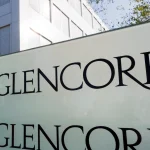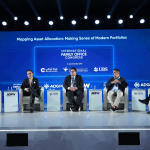U.S. Department of Energy Announces $42 Million to Develop Affordable and Efficient Electric Vehicle Batteries

A Dozen Selected Projects Will Develop Advanced EV Batteries that Charge Faster, Have Greater Efficiency and Resilience, and Boost Consumer Confidence Against Range Anxiety
The U.S. Department of Energy (DOE) announced $42 million in funding for 12 projects to strengthen the domestic supply chain for advanced batteries that power electric vehicles. Projects selected for the Electric Vehicles for American Low-Carbon Living (EVs4ALL) program aim to expand domestic EV adoption by developing batteries that last longer, charge faster, perform efficiently in freezing temperatures and have better overall range retention. Electrifying the transportation sector is critical to rapidly decarbonizing the American economy and eliminating heavy-emitting industries. DOE is directly supporting President Biden’s goals to develop advanced technologies in America that will power the clean energy transition globally and for EVs make up half of all domestic vehicles sales in in 2030.
“Electric vehicle sales in America have tripled since the start of this Administration and by addressing battery efficiency, resiliency and affordability, the projects announced today will make EVs attractive to even more drivers,” said U.S. Secretary of Energy Jennifer M. Granholm. “This is a win-win for our efforts to fight climate change and power America’s clean transportation future with technologies produced by researchers and scientists right here at home.”
See related article: DOE Proposes New Energy Efficiency Standards to Deliver $15 Billion in Savings
The EVs4ALL program is managed by DOE’s Advanced Research Projects Agency-Energy (ARPA-E). ARPA-E selected the following 12 teams from universities, national laboratories and the private sector to address and remove key technology barriers to EV adoption by developing next-generation battery technologies:
- 24M Technologies (Cambridge, MA) will develop low-cost and fast-charging sodium metal batteries with good low-temperature performance for EVs. 24M’s cell design will incorporate (1) its ultra-thick SemiSolid cathode made up of advanced cobalt-free, nickel-free sodium cathode active material, (2) an advanced wide-temperature, fast-charging electrolyte developed using machine learning and automated high-throughput screening technology, and (3) a sodium super ionic conductor. (Award amount: $3,198,085)
- Ampcera (Tuscon, AZ) will develop a solid-state battery incorporating a thermally modulated cell technology (TMCT), developed by EC Power, that was used in conventional lithium-ion (Li-ion) batteries to power buses during the 2022 Winter Olympic Games. The TMSSB comprises a high-capacity silicon anode and a high-voltage, nickel-rich lithium nickel manganese cobalt oxide cathode. Combining the TMCT with a high ion conducting solid-state electrolyte will enable rapid charging at ambient conditions. The TMCT also enables cold startup times of less than a minute at ambient temperatures of -20°C, making the TMSSB advantageous in cold climates. (Award amount: $2,120,120)
- National Renewable Energy Laboratory (Golden, CO) will assess data and parameters representing the risks of next generation cells. The project will establish an understanding of failure mechanisms, reaction pathways, failure modes and effects, revised testing standards, and new capabilities and tools to help de-risk adoption of next-generation cells for commercial applications. (Award amount: $3,425,000)
- The Ohio State University (Columbus, OH) will scale its prototype high-power battery technology that can tolerate rapid charging while demonstrating longevity far beyond the current state-of-the-art Li-ion cells. (Award amount: $3,876,363)
- Project K (Palo Alto, CA) is developing and commercializing a potassium-ion battery, which operates similarly to Li-ion batteries. The fundamental properties of the potassium-ion system allow it to charge much faster than lithium-ion batteries while also enabling operation at reduced temperatures. (Award amount: $2,587,618)
- Sandia National Laboratories (Albuquerque, NM) will develop a novel predictive simulation/modeling and testing framework to evaluate advanced battery material and cell safety at an early stage. (Award amount: $3,700,000)
- Solid Power Operating (Thornton, CO) will develop a 3D-structured Li metal anode and novel sulfur (S) composite cathode to enable high-energy and fast-charging EV battery cells. (Award amount: $5,600,000)
- South 8 Technologies (San Diego, CA) will develop high-power Li-ion battery cells with the capacity to charge rapidly using a novel liquefied gas (LiGas) electrolyte technology. South 8 Technologies will harness the inherent safety, high power, and low temperature advantages of the LiGas electrolyte in combination with a high energy, low cost, and cobalt-free lithium nickel manganese oxide (LNMO) cathode. (Award amount: $3,152,000)
- Tyfast Energy (San Diego, CA) will use a new combination of electrode materials and electrolyte chemistry to enable a high-energy density, ultrafast-charging battery with a long cycle life. (Award amount: $2,823,199)
- University of Maryland (College Park, MD) will increase the charge/discharge-rate capability, energy density, and operating temperature window of solid-state lithium metal batteries. (Award amount: $4,852,733)
- Virginia Tech (Blacksburg, VA) will develop EV batteries using cobalt- and nickel-free cathodes, fast-charging and all-weather electrolytes, and coal-derived fast-charging and high-capacity anodes. By eliminating the use of cobalt and nickel in cathodes, the cathode cost will be reduced by 50%. Additionally, using a coal/carbon/silicon anode will resolve environmental issues of coal waste and reduce anode cost by 75% compared with a graphite anode. (Award amount: $2,945,000)
- Zeta Energy (Houston, TX) will create a new anode with a high Li content that is also highly accessible and rechargeable. The complementary physical and chemical features of the cathode and anode will enable transformational high charge rates and long-term stability while also minimizing performance losses at low temperatures. (Award amount: $4,000,000)












